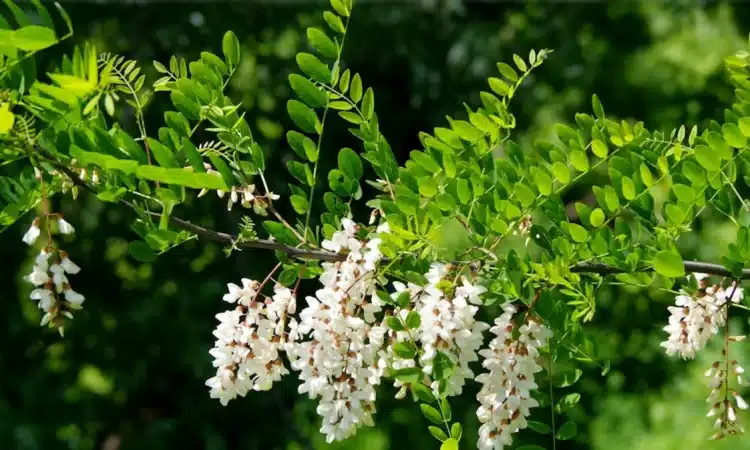
Called an acacia, it is in fact acacia robinia. It delights the eyes of passersby, growing most often in parks, city squares, and gardens, many associating it with the beginning of the vacations.
White flowers with intense fragrance with the arrival of summer richly decorate the plant, making it a true queen among shrubs. Although it is stunning in appearance, has plenty of disadvantages. Think carefully before planting in your garden.
What does a pea tree look like? It is a plant “not to be outdone”
Acacia robinia, although called an acacia, is not one at all. Its correct name is pea tree, and it comes from a species of trees in the bean family. Initially, it was only found in North America. Over time, however, it quickly adapted to the climate of other continents, eagerly appearing one by one in parks and city alleys. It was only years later that its drawbacks began to be recognized.
Acacia robinia can quickly advance from a favorite to a real enemy. For it is extremely hardy, growing fast and growing even faster. In addition, it has a deep tap root, which provides it with access to water. In doing so, it also forms lateral roots from which new plants grow. In this way, it masters the available area in a flash, becoming a almost impossible to remove.
Is the acacia robinia growing fast? In a flash it will become a threat
What’s more, where it begins to grow, other trees have little chance of survival. This is because experts have shown that the acacia robinia, by secreting aleopathic compounds, changes the chemical composition of the soil -. thus halting the growth of other plants growing nearby. Appearing in a garden, it can therefore bring it to ruin in a few moments.
In addition, it is resistant not only to pollution, but also to periodic rushes or frost. Even if it happens to freeze in the spring, it will quickly rebound, soon returning to good shape. Because of this, it has come to be regarded in many countries as a a species that threatens native wildlife. The General Directorate of Environmental Protection is also appealing for caution.
Is the acacia robinia invasive? “It is recommended to abandon cultivation”.
In Poland, according to the General Directorate for Environmental Protection, robinia has been present since the beginning of the 19th century – occurring then mainly in rural and urban green areas. “In the 20th century, it found use in the reclamation of habitats transformed by industry and as a species that contributes to nitrogen enrichment of soils.” Soon after, however, its drawbacks were recognized.
“Already in the first half of the twentieth century, the difficulties that robinia poses for forest restoration after its stands have been felled were recognized. As a result, in the 21st century The cultivation of this species in forest areas has been abandoned, even on land difficult to reforest. There have also been increasing attempts to eradicate it as part of conservation efforts.” – conveys the General Directorate of Environmental Protection.
Experts argue to abandon the cultivation of this shrub. “It is recommended to give up cultivation”. – advises the General Directorate of Environmental Protection. However, if the shrub is already growing in the garden, care should be taken to ensure that no new tree grows around it – and if it does, it should be dug up, uprooted or mowed, taking care that no part of it remains in the ground. And in turn, burn or compost it in a closed container.

